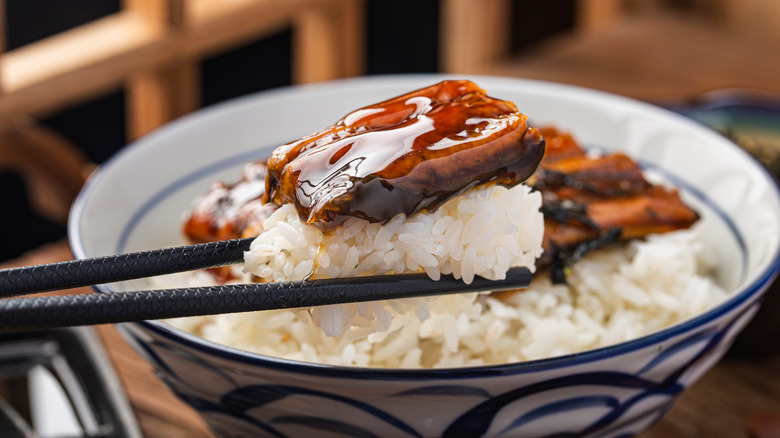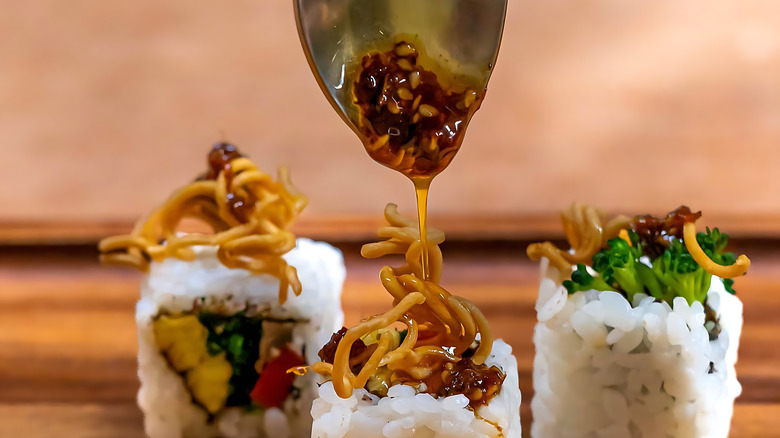Turns Out, Eel Sauce Isn't Made With Eels
Eel sauce, also known as unagi sauce, is a popular condiment in Japanese cuisine. However, don't let the fishy moniker fool you. Despite its name and perhaps contrary to popular belief, eel sauce does not contain eel. Eel sauce is made from a combination of soy sauce, mirin (a sweet rice wine), sugar, and oftentimes sake (a Japanese fermented rice drink).
Why is it called eel sauce? Simply, this salty, tangy sauce is often served with eel in Japanese restaurants. The sweet and savory flavor pairs perfectly with the rich, fatty profile of grilled eel.
The recipe for making your own eel sauce at home is straightforward. The ingredients are combined in a small saucepan and simmered over low to medium heat until the mixture thickens and forms a nice, viscous syrup. The result is a sauce that is dark brown in color with a slightly saccharine, boldly umami flavor.
Eel sauce has a unique umami flavor
Eel sauce is incredibly versatile and can be used in a variety of dishes. It is commonly served with sushi rolls, grilled meats, and vegetables. It can also be used as a marinade or glaze for fish, chicken, or pork.
In addition to its delicious taste, eel sauce is also believed to have some health benefits — if it's consumed in moderation. Soy sauce, one of the main ingredients, contains several antioxidants, is an excellent source of protein, and may promote digestion. However, soy sauce is notoriously high in sodium and amines. Mirin, on the other hand, is low in calories and can help regulate blood sugar levels. Traditional Japanese medicine also states that mirin helps reduce feelings of fatigue.
Eel sauce is a luscious, versatile condiment that adds a mouthwatering zest to any food. As it does not contain eel (or other animal byproducts), it is suitable for omnivores, vegetarians, and vegans alike. The next time you're dining at a Japanese restaurant or order takeout, try some eel sauce with your meal.

